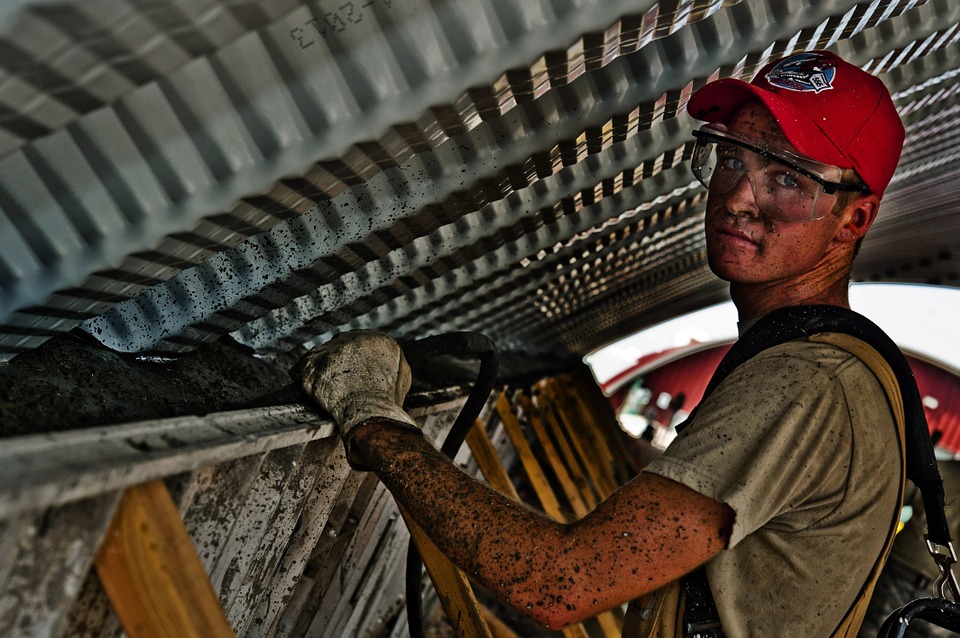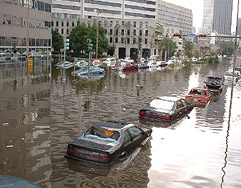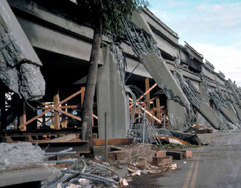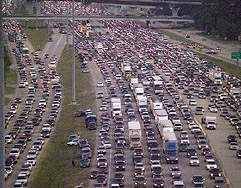Written by Daniel Matthews
Crumbling infrastructure in a country racked with the aftermath of an economic meltdown.
A United States president, promising to end economic hardship for millions of alienated workers through infrastructure repair and the creation of new jobs.
Sound familiar? That’s because this already happened nearly a hundred years ago when FDR enacted his second phase of the New Deal.
 The Great Depression of 1929 was in part caused by bad loans that people couldn’t repay because of low wages and unemployment. The Great Recession of 2008 wasn’t quite as virulent, because it was concentrated in the housing sector. But the similarity can’t be dismissed. In the Great Recession, people defaulted on bad loans—mortgages that banks foolishly handed out to people who couldn’t afford the terms. The Great Depression and the Great Recession both led to high levels of unemployment.
The Great Depression of 1929 was in part caused by bad loans that people couldn’t repay because of low wages and unemployment. The Great Recession of 2008 wasn’t quite as virulent, because it was concentrated in the housing sector. But the similarity can’t be dismissed. In the Great Recession, people defaulted on bad loans—mortgages that banks foolishly handed out to people who couldn’t afford the terms. The Great Depression and the Great Recession both led to high levels of unemployment.
When FDR enacted the Second New Deal he created the Public Works Administration (PWA), which employed hundreds of thousands to work on infrastructure projects, such as repairing roads, bridges, and dams. Additionally, the Civilian Conservation Corps employed around 2,750,000 younger workers to help conserve natural infrastructure through irrigation, soil enrichment, pest control, tree planting, fire prevention, and other projects.
Now, our infrastructure needs another upgrade, and an entire sector of workers who haven’t recovered from the recession need jobs. Infrastructure repair can create those jobs. It has happened before, but will it happen again? And when the dust has settled, will America be satisfied with the results?
Paying for infrastructure repair
Because state dollars are stretched so thin, infrastructure projects are typically at the mercy of the federal budget. Twenty percent of the budget is allocated to retiree benefits for veterans and federal employees, transportation infrastructure, science and medical research, and education. All very important items, but this spreads that twenty percent rather thin when it comes to transportation infrastructure spending. By comparison, an entire twenty percent went to defense spending in 2011, including $159 billion of taxpayers’ money for the wars in Iraq and Afghanistan.
In 2015, Barack Obama signed a $305 billion highway spending bill, but that was short of the $400 billion administration officials projected we’ll need over the next four years. And it wasn’t quite clear where all of the funds for $305 billion were going to come from. Projects such as Amtrak and rail improvements, mass transit, and vehicle safety programs are dependent on Congress’ year-to-year spending decisions. $6.5 billion of funding from oil sales won’t kick in until after the bill expires, in 2023. Another $53 billion is simply being moved from the Federal Reserve Bank’s capital account to the general treasury, a transfer of funds that increases the deficit. The highway spending bill fell a little short, and progress on it has been slow-going.
Now, President Trump is eyeing a different approach that looks likely to prefer swift action and Public Private Partnerships. Yet, there’s debate as to whether private contractors will use federal money to actually create jobs. And again, the question is, where will the money come from?
Will Trump’s infrastructure plans create jobs?
As of this writing, the President has already starting moving on infrastructure repair. The Executive Order Expediting Environmental Reviews and Approvals For High Priority Infrastructure Projects states that, “Federal infrastructure decisions should be accomplished with maximum efficiency and effectiveness, while also respecting property rights and protecting public safety and the environment.”
Trump is ordering the Chairman of the White House Council on Environmental Quality to determine whether an infrastructure project that needs federal approval is “high priority” within 30 days of the approval request. Then, the Chairman will coordinate with the head of the relevant agency to expedite necessary environmental reviews and approval.
This could create state jobs based around projects that are “high priority.” And Trump has his own list of high priority infrastructure projects. The projects will total at least $137 billion in investments, with about half of the funding coming from private investment. As detailed by McClatchyDC, priority is going to projects that:
- Are a national security or public safety “emergency”
- Are “shovel-ready,” with at least 30 percent of initial design and engineering work complete
- Are a direct job creator
- Have the potential for increased U.S. manufacturing
For example, a new Kansas City International Airport could create 1,000 jobs. North Carolina’s I-95 improvement could create 5,400 jobs, while a high speed rail between Dallas and Houston could create 40,000 direct jobs. Nationwide, one of the priority projects is “Energy Storage and Grid Modernization.” In terms of positive environmental impact, grid modernization and energy storage improvements could go to augment the 119% total growth in U.S. solar installations from 2016. This growth is largely a result of the Solar Investment Tax Credit, which is a 30% credit to businesses for installing solar systems. The Solar Energy Industries Association expects the extension of this credit to create 200,000 jobs by 2020.
Meanwhile, Senate Democrats have introduced a $1 trillion dollar infrastructure bill, which they claim could create 15 million jobs. It calls for $100 billion in power grid upgrades and renewable energy incentives. Clearly, they want President Trump to put taxpayers’ money where his mouth is.
Issues moving forward
Robert A. Klain, who oversaw Obama’s American Recovery and Renewal Act, calls Trump’s infrastructure plan a ‘trap’. His argument is that, “It’s a tax-cut plan for utility-industry and construction-sector investors, and a massive corporate welfare plan for contractors.” There’s no guarantee investors will throw money into much-needed projects, such as municipal water system upgrades, because there’s no ROI for such an investment. The priority projects are already underway. Contractors will receive $85 million in tax breaks footed by taxpayers, with no obligation to hire new workers or expand workers’ hours. In other words, projects could continue for much longer than necessary, utilizing the current workforce, while contractors pocket the tax breaks.
And the overall issue of funding continues to loom. As Business Insider points out, Republicans don’t support the $1 trillion dollar infrastructure stimulus, and they dominate both House and Senate. Democrats do not support the public-private partnership model for funding infrastructure repairs. Trump has ideas on what to build, but no idea on how to fund projects, beyond the aforementioned tax cuts for investors and welfare for contractors. Highway and bridge tolls could help, but they would see citizens footing the bill with both taxes and tolls, while investors and contractors reap the windfall. But will workers see any of that windfall?
There are jobs in infrastructure repair. But to create those jobs, all parties involved–including Republicans, Democrats, investors, contractors, and taxpayers–will have to tackle the funding and accountability hurdles that stand in the way.
…
Daniel Matthews is a freelance writer and musician from Boise, Idaho with a Bachelor’s Degree in English Creative Writing from Boise State University. He has written for Triple Pundit, Switch and Shift, Jeff Bullas’ blog, Lifehack, and Paste Magazine. He’s the grandson of an United States senator, and his interest in America’s infrastructure stems from his interest in what makes this country great: the determination, brilliance, and hard work of those who came before us, and our determination to carry the torch.
Tags: Donald Trump, Job Creation, President Trump, Trump Administration






 RSS Feed
RSS Feed